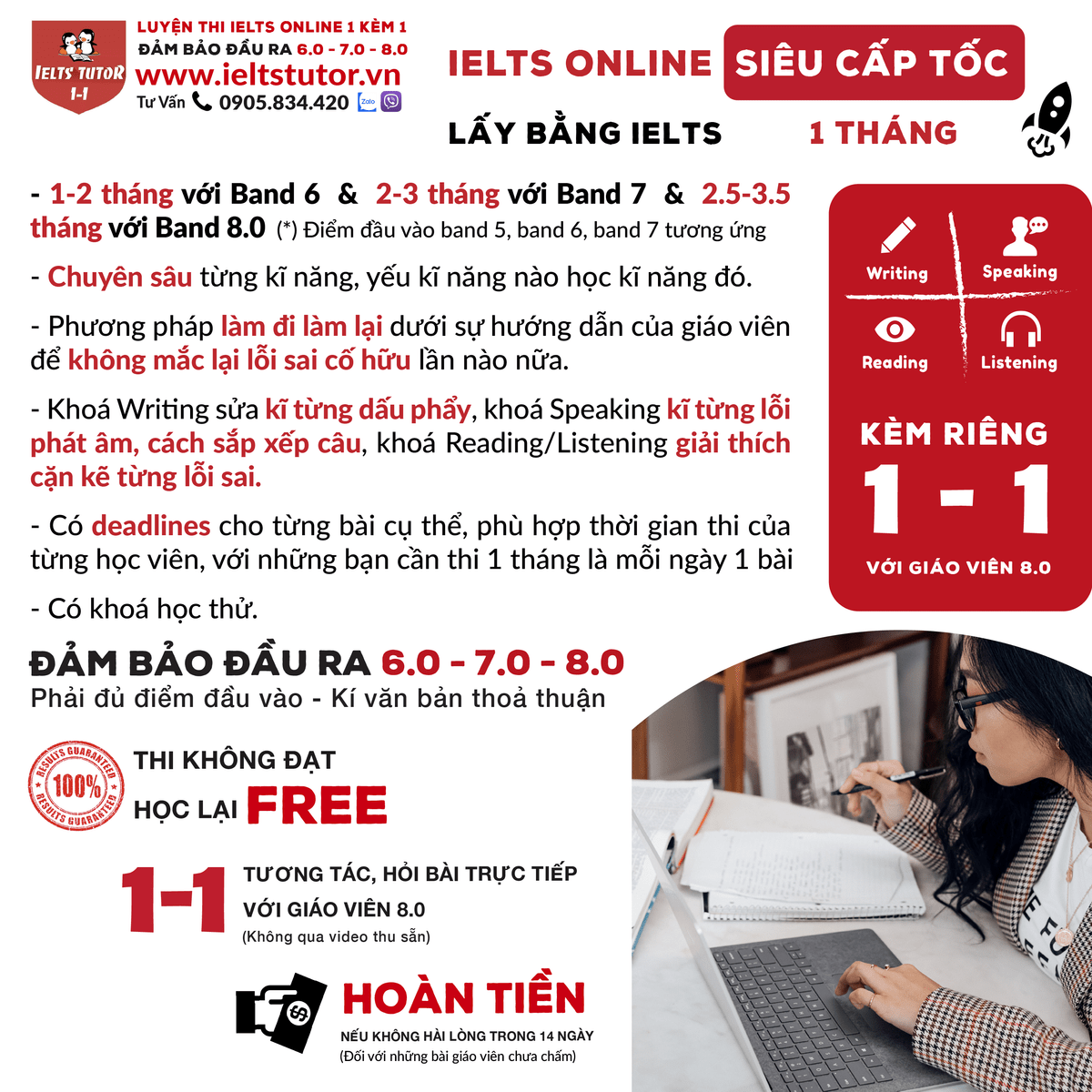Bên cạnh Bài sửa đề thi IELTS WRITING TASK 2 ngày 22/8/2020 của HS đi thi đạt 7.0, IELTS TUTOR Giải đề"The chart below shows the percentage of different types of household waste that were recycled in one city between 1992 and 2002." IELTS WRITING TASK 1(Đề thi giấy 13/6/2024)
I. Đề bài
The chart below shows the percentage of different types of household waste that were recycled in one city between 1992 and 2002.

II. Phân tích
1. Kiến thức liên quan
IELTS TUTOR hướng dẫn Cách viết Bar Chart (Biểu đồ cột) IELTS WRITING TASK 1 ...
2. Phân tích
- Dạng biểu đồ này thì đã rất quen thuộc với các bạn học sinh lớp IELTS ONLINE WRITING 1 KÈM 1 của IELTS TUTOR rồi nhé
- Overall:
- Overall, there was a general increase in recycling rates for all four types of waste, with the most significant change seen in glass recycling.
- Body 1: Viết về plastic + can
- Plastic started at approximately 10% and cans at 18% in 1992, both significantly lower compared to other materials.
- Plastic saw a slight increase of about 2% by 1997, while the figure for cans halved during the same period.
- In 2002, the recycling rate for plastic remained unchanged, but cans rebounded to about 20%.>> Form đăng kí giải đề thi thật IELTS 4 kĩ năng kèm bài giải bộ đề 100 đề PART 2 IELTS SPEAKING quý đang thi (update hàng tuần) từ IELTS TUTOR
- Body 2: Viết về glass + paper
- During most of the period, paper and glass, starting at approximately 14% and 15% respectively, significantly rose to 21% and 29% within five years, establishing them as the most recycled materials.
- Towards the end of the period, their recycling rates nearly doubled those of plastic and cans, reaching approximately 40% and 50%.
- Overall:
IELTS TUTOR gợi ý bài tham khảo:
The bar chart illustrates the proportion of household waste recycled in a particular city from 1992 to 2002, categorized into four main types: plastic, cans, glass, and paper.
Overall, there was a substantial upward trend in recycling rates across all materials over the decade, with glass recycling showing the most remarkable increase.
In 1992, recycling rates for plastic and cans were notably lower than those for glass and paper, standing at around 10% and 18% respectively. Plastic saw a modest rise to approximately 12% by 1997, whereas the recycling rate for cans halved to about 9% during the same period. By 2002, the recycling rate for plastic remained stagnant at 12%, while cans rebounded to nearly 20%.>> IELTS TUTOR có hướng dẫn kĩ SỬA BÀI IELTS WRITING TASK 2 ĐỀ THI THẬT NGÀY 22/8/2020 của HS IELTS TUTOR đạt 6.5 Writing
In contrast, glass and paper started at approximately 15% and 14% respectively in 1992. Both materials experienced consistent growth, with paper's recycling rate climbing to around 21% by 1997 and glass reaching approximately 29%. By the end of the period in 2002, glass and paper recycling rates soared to approximately 50% and 40% respectively, making them the most recycled materials in the city.

Các khóa học IELTS online 1 kèm 1 - 100% cam kết đạt target 6.0 - 7.0 - 8.0 - Đảm bảo đầu ra - Thi không đạt, học lại FREE
>> Thành tích học sinh IELTS TUTOR với hàng ngàn feedback được cập nhật hàng ngày




